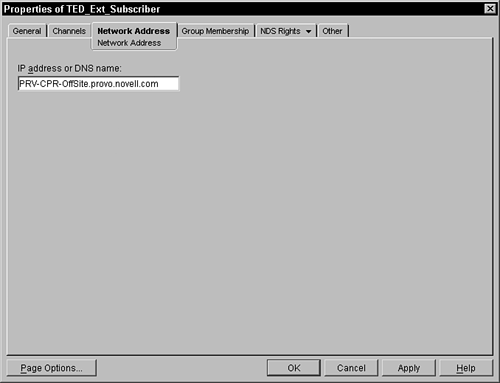External Subscriber
| An external subscriber is a TED subscriber that resides on a server not located in the tree of the distributor. The controlling subscriber object of an external subscriber is located in the external tree. The distributor's tree does contain an external subscriber object, which identifies the IP address of the remote subscriber. An external subscriber object is basically just a pointer to the subscriber service running on a server that has its subscriber object in a different tree. Each subscriber should have exactly one subscriber object, but each may also have many external subscriber objects that point to. For example, if there were a subscriber object in the FORD tree, it would receive its configuration information from a distributor in the FORD tree. There could be an external subscriber object in each of the GM, NISSAN, and BMW trees, but distributors in those trees would send only distribution files, not configuration information, to the subscriber. The following is a list of important things to note about an external subscriber:
About the General Property PageOn this page you may identify a parent subscriber for this subscriber. The parent subscriber would be a subscriber object in this tree. You need to click the Browse button to the side of the field and browse NDS to select the subscriber that is to be identified as the parent subscriber. Discussing the Channels Property PageOn this property page you identify the channels from which this external subscriber will receive distributions. As you recall, any distribution that is placed in a channel subscribed to by this external subscriber will be sent. Looking at the Network Address Property PageOn this property page, represented in Figure 6.19, you specify the IP address or DNS name of the server that is running the external subscriber. Figure 6.19. Network Address property page of an external subscriber object.
To administer the address, simply place the cursor in the IP Address or DNS name field and enter the IP address or the server's DNS. |
EAN: N/A
Pages: 137
